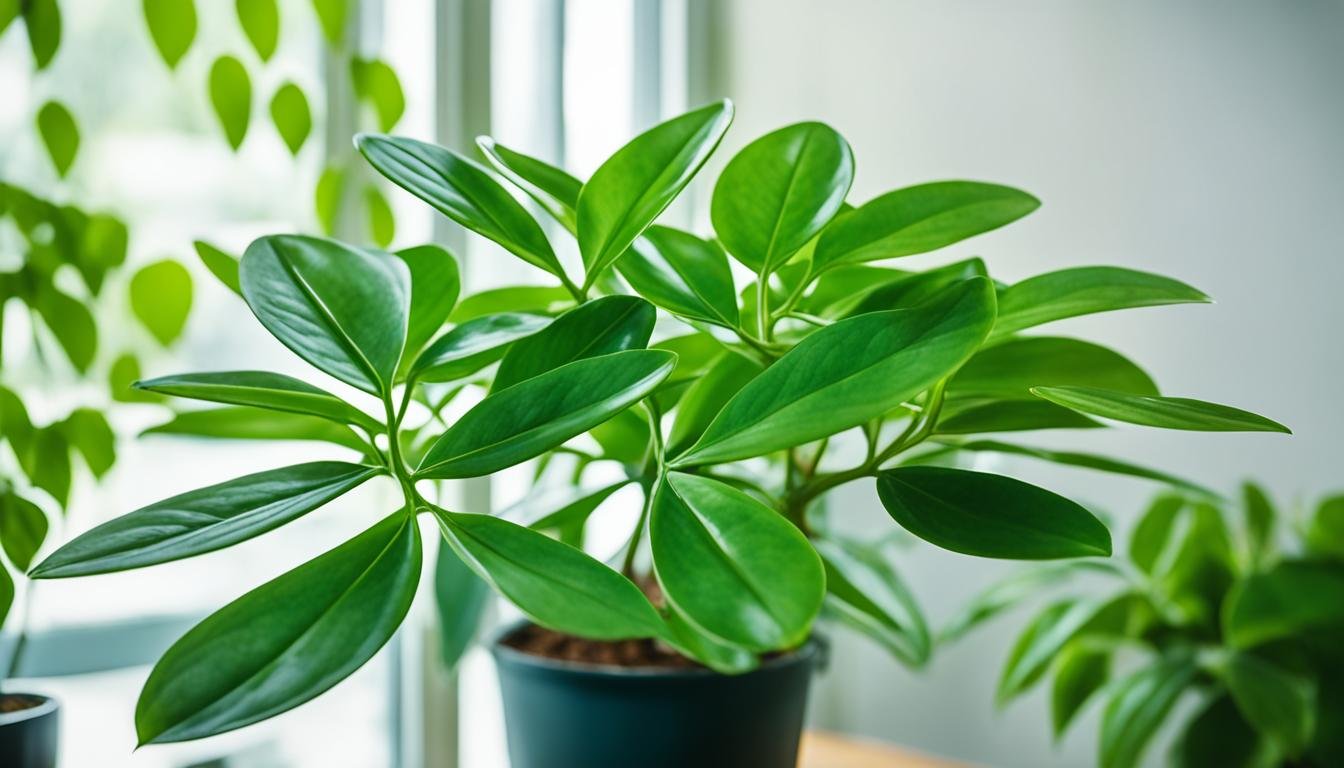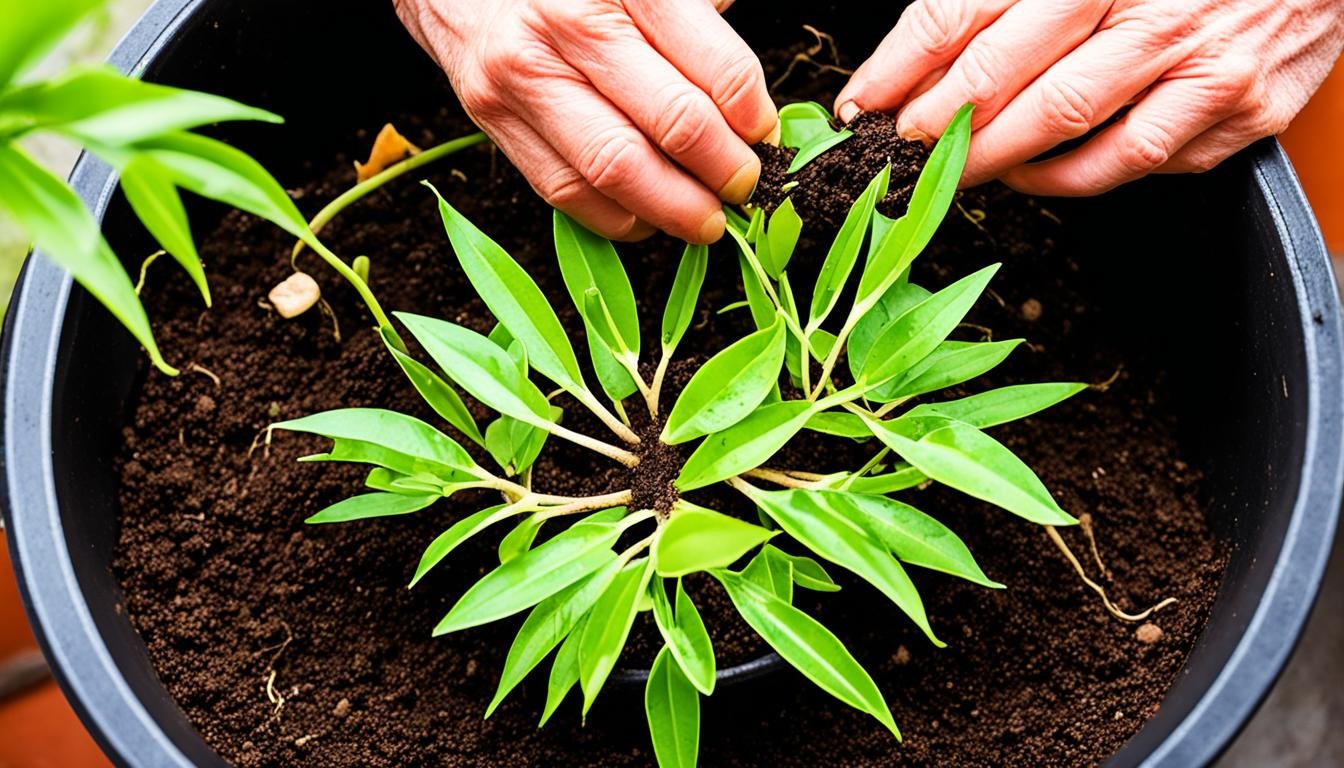Propagate Umbrella Plants Like a Pro with This Simple Guide
Do you remember the feeling of walking into a room and being immediately drawn to the vibrant green foliage of a beautiful umbrella plant? That's exactly what happened to me when I first encountered these stunning houseplants. The glossy leaves, gracefully drooping like an umbrella, instantly captivated my attention and filled my heart with a sense of tranquility and joy.
I quickly realized that caring for umbrella plants can provide a much-needed connection to nature, especially in urban environments where green spaces are scarce. As I nurtured my own umbrella plants, I discovered the satisfaction of watching them grow and thrive under my care, bringing life and beauty to my home.
If you, like me, have fallen in love with umbrella plants and want to propagate them to expand your collection or share their beauty with others, this simple guide is for you. Here, I will equip you with the knowledge and techniques to successfully propagate umbrella plants, ensuring their healthy growth and longevity in your home.

Join me on this journey of exploration and discovery as we delve into the world of umbrella plant propagation. Together, we'll uncover the best methods, conditions, and care tips to propagate these exquisite plants like a pro. By the end, you'll be equipped with the confidence and expertise to create a flourishing indoor garden filled with the lush foliage of umbrella plants.
Why Propagate Umbrella Plants?
There are several reasons why you might want to propagate your umbrella plants. Firstly, it allows you to expand your collection without having to spend money on new plants. Propagating umbrella plants can be a rewarding and fun gardening project, offering the opportunity to learn more about plant propagation and witness new plants forming.
Moreover, propagating umbrella plants can also be a way to share the beauty of these plants with friends and family. Imagine gifting a loved one with a thriving umbrella plant that you propagated yourself. It's a thoughtful and personal gesture that showcases your green thumb and creates a lasting connection.
In addition to these benefits, propagating umbrella plants is an environmentally friendly practice. By propagating and growing your own plants, you contribute to the preservation of these beautiful plants and reduce the demand for commercially produced ones.
Whether you're looking to expand your collection, share the joy of gardening, or make a positive impact on the environment, propagating umbrella plants offers many benefits. It's a fascinating and fulfilling journey that allows you to nurture and create new life, all while adding beauty to your indoor space.
Propagation Methods for Umbrella Plants
When it comes to propagating umbrella plants, there are several methods you can choose from. Each method has its own advantages and may be more suitable for different situations. Let's explore some of the most common propagation methods for umbrella plants:
- Stem Cuttings: Stem cuttings are a popular and easy way to propagate umbrella plants. Simply take a healthy stem from the parent plant, making sure it has a few leaves. Remove the lower leaves and place the cutting in a pot with moist soil. Ensure the cutting receives bright, indirect light and keep the soil consistently moist. Over time, the cutting will develop roots and grow into a new plant.
- Air Layering: Air layering is another effective method for propagating umbrella plants. With this technique, you create a conducive environment for the stem to develop roots while it is still attached to the parent plant. Start by making a small wound on the stem and covering it with moist sphagnum moss. Seal the moss with plastic wrap, ensuring it remains in place. This method allows the stem to create its own roots while still receiving nutrients from the parent plant. Once the roots have developed, you can cut the stem and transfer it to its own pot.
- Division: Division involves separating the parent plant into smaller sections that each have their own root system. To divide an umbrella plant, carefully remove it from its pot and gently separate the root ball into smaller clumps. Ensure each clump has sufficient roots and leaves. Plant the divided clumps in individual pots, water thoroughly, and provide the necessary care. This method can be particularly useful when the parent plant has a dense root system or has outgrown its current pot.
- Umbrella Plant Seeds: Propagating umbrella plants from seeds is possible, but it requires more time, patience, and effort compared to other methods. To start, collect ripe seeds from the parent plant. Sow the seeds in a well-draining potting mix, ensuring they are covered lightly with soil. Keep the soil consistently moist and provide warmth and bright, indirect light. Germination can take several weeks or even months, depending on the conditions. Once the seedlings have grown into small plants, you can transplant them into their own pots.
These propagation methods provide you with different options to choose from, depending on your preferences and the resources available. Whether you opt for stem cuttings, air layering, division, or seeds, each method has its own unique benefits and can be a rewarding way to expand your collection of umbrella plants.
Best Conditions for Propagation
Creating the best conditions for propagating umbrella plants is essential for successful growth. These plants thrive in a temperature range of 16-27°C (60-80°F), so it's important to provide them with stable and warm conditions.Place your propagating container in a well-lit area, but avoid direct sunlight as it can scorch the delicate new plants.
- Maintain high humidity levels: Umbrella plants prefer humid environments, which can be achieved by covering the container with a clear plastic bag or using a propagating dome.
- Water the plants regularly: Keep the soil moist but not waterlogged. Check the moisture level regularly and adjust watering frequency as needed.
- Provide proper lighting: While umbrella plants require bright light, direct sunlight can harm the new plants. Place them in a well-lit area away from direct sunlight to ensure optimal growth.
- Control the temperature: Maintain a temperature between 16-27°C (60-80°F) to create the ideal conditions for umbrella plant propagation.
Choosing the Right Soil for Propagation
When it comes to propagating umbrella plants, selecting the appropriate soil is vital for ensuring successful growth. The right soil should be well-draining, allowing excess water to flow out easily and preventing issues such as root rot. To create an optimal environment for root development, I recommend a well-balanced soil mix consisting of peat moss, perlite, and vermiculite.
Peat moss serves an essential role in retaining moisture, providing the ideal level of hydration for the umbrella plant during propagation. It helps to regulate the moisture content, ensuring the roots receive the necessary amount of water.
Additionally, the inclusion of perlite in the soil mix promotes aeration and improves drainage. This prevents waterlogging, which can be detrimental to root health. It allows air to circulate freely around the root system, facilitating the uptake of oxygen and preventing the development of fungal diseases.
The third component of the soil mix, vermiculite, contributes to moisture retention and drainage. It creates a porous structure that holds moisture near the roots, keeping them moist without becoming waterlogged. This is crucial for supporting healthy and robust growth during the propagation process.

By combining these three components - peat moss, perlite, and vermiculite - you can create a well-draining soil mix that provides the ideal conditions for propagating umbrella plants. Remember, a balanced soil mix is vital for the successful development of the root system, ensuring that your newly propagated umbrella plants thrive and flourish.
Caring for Newly Propagated Umbrella Plants
Once you have successfully propagated your umbrella plants, it is crucial to provide them with the proper care to ensure their healthy growth. Start by carefully transplanting each new plant into individual pots filled with the recommended soil mix. This well-draining soil mix, which consists of peat moss, perlite, and vermiculite, provides the ideal environment for the roots to develop and prevents issues like root rot.
Water your newly propagated umbrella plants regularly, ensuring that the soil remains evenly moist. Avoid overwatering, as this can lead to waterlogged conditions that can harm the plant's roots. Place your plants in a well-lit area, away from direct sunlight, to prevent leaf burn. Umbrella plants prefer bright, indirect light for optimal growth.
Maintaining the right temperature is also important for your newly propagated umbrella plants. Keep the temperature between 16-27°C (60-80°F) to provide the ideal conditions for growth. Extreme temperatures, both hot and cold, can negatively affect the plant's health and slow down its growth.
In addition to proper potting, watering, light, and temperature conditions, fertilizing your umbrella plants is essential for their overall health and development. Use a balanced liquid fertilizer every 2-4 weeks to provide the necessary nutrients for robust growth. Follow the manufacturer's instructions for the recommended dosage and application method.
FAQ
Q: Why should I propagate umbrella plants?
A: Propagating umbrella plants allows you to expand your collection without spending money. It is also a rewarding gardening project and a way to share the beauty of these plants with others.
Q: What are the methods for propagating umbrella plants?
A: The common methods for propagating umbrella plants are stem cuttings, air layering, division, and using umbrella plant seeds.
Q: How do I propagate umbrella plants using stem cuttings?
A: To propagate using stem cuttings, simply cut a healthy stem from the parent plant, remove the lower leaves, and place it in a pot with moist soil.
Q: What is air layering and how can I use it to propagate umbrella plants?
A: Air layering involves wrapping a portion of the stem with moist sphagnum moss and plastic wrap to promote root growth.
Q: How do I propagate umbrella plants through division?
A: To propagate through division, separate the parent plant into smaller sections with roots.
Q: Can I propagate umbrella plants from seeds?
A: Yes, propagating umbrella plants from seeds is possible, but it requires more time and patience.
Q: What are the best conditions for propagating umbrella plants?
A: Umbrella plants thrive in a temperature range of 16-27°C (60-80°F). They require stable and warm conditions, well-lit areas but not direct sunlight, high humidity, and regular watering.
Q: What type of soil should I use for propagating umbrella plants?
A: Choose a well-draining soil mix that combines peat moss, perlite, and vermiculite for optimal growth.
Q: How should I care for newly propagated umbrella plants?
A: Transplant them into individual pots with the recommended soil mix, water regularly to keep the soil moist but not waterlogged, place them in a well-lit area avoiding direct sunlight, maintain a temperature between 16-27°C (60-80°F), and fertilize every 2-4 weeks with a balanced liquid fertilizer.
